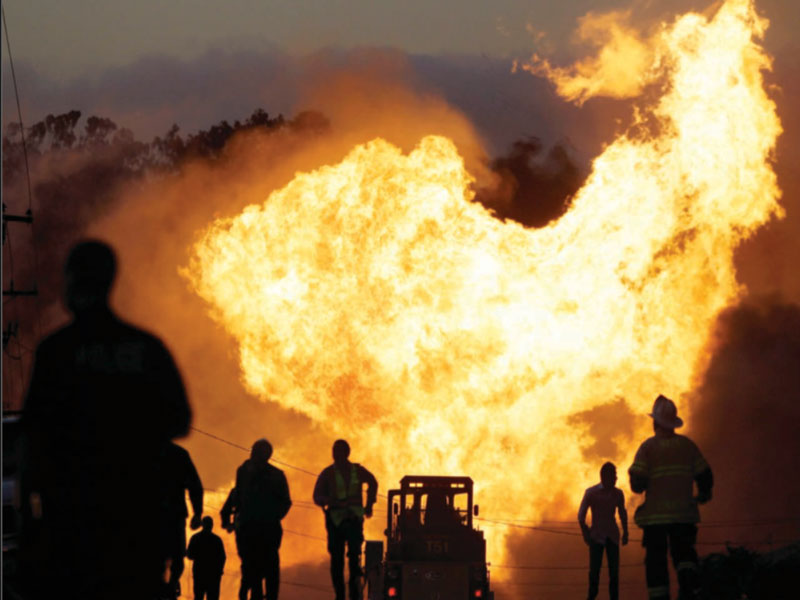
Citizens and policy makers are organizing themselves to enable the development of “resilient” communities. This means that our communities, which are highly dependent on our infrastructure, not only need to withstand major events such as large earthquakes, but also recover quickly from that event so that functionality is restored. Thus, we need to consider all potential subsequent events that may occur following the initiating event. In the case of earthquakes, historical events show that fire typically follows. An open source nonlinear structural analysis software, OpenSees, has recently been adapted so that simulations of fire following earthquake can be made using a probabilistic approach to consider several uncertainties. This tool can be used to develop numerous studies of fire following earthquake scenarios and examine the parameters that are most sensitive to the structural response. In addition, fire following earthquake is being studied at the community level as discussed in the “community resilience” research page.
Partial List of References
- Elhami Khorasani, N., Gernay, T., Garlock, M.E.M. (2017). “Data-Driven Probabilistic Post-Earthquake Fire Ignition Model for a Community”, Fire Safety Journal, Elsevier, Vol 94, pp. 33-44.
- Gerasimidis, S., Elhami Khorasani, N., Garlock, M.E.M., Pantidis, P. Glassman, J. (2017). “Resilience of tall steel moment resisting frame buildings with multi-hazard post-event fire”, Journal of Constructional Steel Research, Elsevier, Vol. 139, pp. 202-219.
- Elhami Khorasani, N., Garlock, M.E.M. (2017). “Overview of Fire Following Earthquake: Historical Events and Community Responses”. International Journal of Disaster Resilience in the Built Environment, Volume 8, Issue 2.
- Elhami Khorasani, N., Garlock, M.E.M., Gardoni, P. (2015). “Probabilistic Performance-Based Evaluation of a Tall Steel Moment Resisting Frame under Fire Following Earthquake”. Tentatively accepted in the Journal of Structural Fire Engineering.
- Elhami Khorasani, N., Garlock, M.E.M., Quiel, S. (2015). “Modeling Steel Structures in OpenSees: Enhancements for Fire and Multi-Hazard Probabilistic Analyses”, Computers and Structures, Elsevier, Vol. 157, p. 218–231.
- Elhami Khorasani, N., Garlock, M.E.M. (2014). “Using OpenSees for Analyzing a 9-Story Steel Building Under Post- Earthquake Fires”, Proceedings of the Tenth U.S. National Conference on Earthquake Engineering, Frontiers of Earthquake Engineering, July 21-25, 2014, Anchorage, Alaska.
